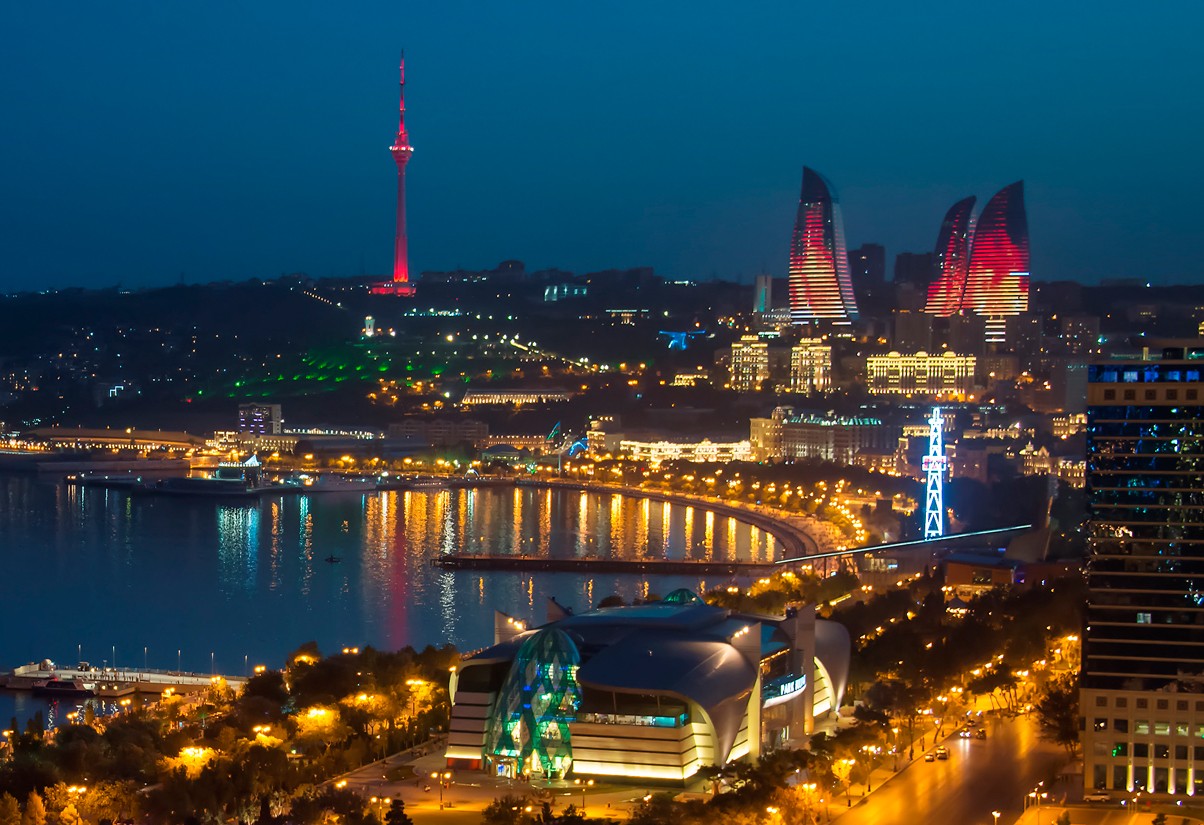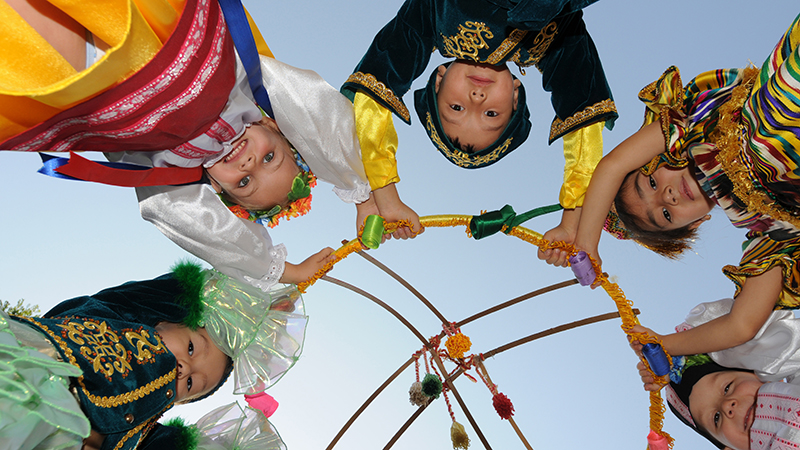Aitmagambetov Duman – candidate of history sciences,
leader of staff of rector of L.N. Gumilyov
Eurasian National University
Iskakova Kulzira – candidate of philosophy sciences,
professor of the department of history of Kazakhstan
of L.N. Gumilyov Eurasian National University
HORSE IS AN ETERNAL COMPANION OF THE KAZAKH
In the territory of modern Kazakhstan horse appeared 6 thousand years ago, together with the first nomadic tribes, generating of this land, that is with the first cultural civilizations, occupying of horse breeding. This was an Andronov culture. All following tribes, who occupied the territory of Kazakhstan – Saxes, Kangls, Kangs, Huns and many others, who were inextricably linked with horse breeding, so as their existence on the lands of a large scale without horses would be simply impossible. All their life totally depended from presence or absence of horses.
Movement of people to thousand kilometers, aggressive wars were impossible without good cavalry army. Name of the tribes «nomadic tribes» is implied mobility, rapidity, lightning nomad camp after attack and etc. Horse of Kazakh always was something immeasurably bigger than mean of conveyance, source of food, attribute of richness and prestige amongst neighbours. Horse was the part of life philosophy and world-outlook of human of Steppe, and horse’s behaviour and actions were answer on many compound human questions. Horse played exceptionally important role in life and way of life of nomads, who used it as a worker, butcher’s and milk animal.
British scientists after Americans recognized that horse was domesticated for the first time at the territory of Kazakhstan. Scientists from University of Pittsburg recognized the settlement Botay the most ancient monument of domestication of horse. It is interesting, that settlement Botay is situated near from Atbasar town (the name of this town in translation from Kazakh language means «to ride on horseback»). Junior scientific assistant-professor Rozmary Kapo conducted a chemical analyze of soil near from settlement. Research confirmed that 5 600 years ago, when people lived at the turn of the stone and cooper centuries, the ancestors of Kazakh bred the horses. Scientists from British University in Ekzeter after leadership of Ellan Outram found here the model of first bridles. Now they are considering, that namely in Botay, people taught riding on horseback for the first time. Besides, Britishers found the tracks of the horse’s milk on ancient cups. The conducted their researchers with well-known archeologist from Kokshetau University Viktor Zaybert. In 2008 year Pavlodar scientist Viktor Merts conducted working of ancient site of people of time of Neolitic and Eneolitic periods – Borly and proved, that in V – IV millenniums B.C. ancient population of north-east of Kazakhstan tame and domesticated horse.
Horse gave to people always: food and wear, possibility to hunt and fight, entertainment and enjoyment from that they as free animals are gamboled in an expanses of their land. The best racers made a sacrifice to God of the Sun, which particularly were honoured among steppe dwellers. It was considered that this animal is only who can compare with Sun at speed. The ancient-Greek historian Gerodot mentioned that in his works.
From ancient times Greeks interpreted nomads as centaurs – mythical self-animals-self-Gods, as a strong and unattainable men. Nomads, accomplished their raids, lived in the open air, in steppe areal suddenly appeared and so suddenly disappeared from field of vision of people of plains. Because they afraid them, and thought up various myths and legends.
Outstanding Kazakh scientist-archeologist Alkey Margulan wrote about etno-economic successions of Saxes and Kazakhs: «They had a similar life features and forms of economic. The best horses made a sacrifice. Skull and hooves of horse are served as a talisman. For example, Saxes hung to the belt hooves of famous racers as a subject bringing happiness in travel and protected from death during the battle. The same tradition was among Kazakh».
All technicalities of horse breeding and in whole, of all cattle breeding, inherent to ancient-turk period, reflects in life and language of Kazakh. In Chinese sources poetically are said about Kazakhs, as people «growing up on back of horse». From people legends and tales we know about horses of Er-Tostik – Shal Kuiryk, of Koblandy batyr – Taiburyl, of Alpamys – Baishubar, of Ablai-khan – Alshanboz (motley-grey) and Zhalyn Kuiryk (fiery tail) and many others. Their main qualities and signs recognized in the names of horses.
Upbringing of horse, designed for the hunting and battles, provides its participation in horse games, racings and stunts on back of horse. Among Kazakh were distributed sport-war games: lost to us from ancient times struggle of riders during of battle. The well-known Kazakh game «Overtake the girl», which is a very popular and today, by rules of this game if horsemen overtake girl, that he will receive a kiss, if he can’t overtake her, that receive poundings of whips.
Nomadic people from ancient times in great multitude represent horses as devote and faithful friends. Because life of nomads directly linked with horse, they were personages of myths, tales, legends and epical poems. The fantastical image of winged steeds, performances about magical winged substances winged steeds appeared in ancient times.
In Kazakh prose it’s difficult find work, where not describe this noble anymal from different sides. Ilyas Zhansugurov (1894 – 1938), the Kazakh poet, one of the founder of Kazakh literature, rise in a grate high place theme of poet-singer Ahan and his invincible racer Kulager, which wasn’t equal in all steppe region of this period, in poem «Kulager»:
From childhood my soul is captivated of racers
Because I was burn among steppe horses
Horse carried me by steppes, bringing his mane
I held for it,
I leaned to it,
I always know about horses. My fate among them
About dashing horses I compose the poems
From ancient times Kazakh live in sunny steppes
Where sky upwards, and ground downstairs
And rich man and poor man knew sense in horse
From ancient time for Kazakh were alongside friend and horse
Without horse life in steppe impossible because!
It’s symbolically that fantastical racers – tulpars with golden wings and horns in form of half moon became a compound part of compositional structure of emblem of Kazakhstan Republic. Shape of racers on language of heraldists has depth meaning and content. Particularly is marked faithfulness, hard-working, prowess and beautiful of this animal. Flying tulpar is united in himself time and space, reminding to descendants about great nomads – ancestors of Kazakhs.
Horse in Kazakhstan may be named as a national horse, because it play a huge role in fate of Kazakh people. The horse was a friend and comrade in a literal meaning, because they never let with each other.
Horse was not only unique mean of conveyance and source of full value nourishment of man, horse was and now it is a symbol of Kazakh life, not only nomadic life, bul life in generally, because for settled man the symbol of life is house, but for Kazakh the horse was as a house, because it was only reliable essence, who can help in a difficult nomadic life. Kazakh had a huge territories, nomadic expanses by which they wandered every season from summer pasture to autumn pasture, from autumn pasture to winter pasture, from winter pasture to spring pasture and from spring pasture to summer. In a base of nomadism by seasons of year was lied a principle of careful relation to nature, which was checked by time and proved a wisdom of our ancestors. The natural-climate factor is the main factor of choice in quantity of main forms of economic – nomadic cattle-breeding. By estimation of scientist more than 90 per cents of lands of Kazakhstan were arid from ice age. By meagre precipitations, high evaporation in arid territories mainly grew bushes and self-bushes and because the lands of Kazakhstan were more good for nomadic cattle breeding. Routes of nomad encampments put by centuries and served till first third of XVIII centuries. The fall of nomadic cattle breeding began from addition of Kazakhstan to Russian Empire.
We may say without exaggeration that only thanks to horse Kazakhs survived as a nation. Without this four-legged friend they will die out long ago or assimilated in people who tried to conquer Kazakh tribes. Horse helped to Kazakh to serve their national and cultural identity and originality.
The glorious history of nomadism was broken in the beginning of ХІХ century, in period of leading of territory-administrative reforms of tsar administration of Russian Empire. Official, didn’t investigate thoroughly in specifically peculiarity of family-tribe structure of Kazakhs (suitable form of leading of nomadic economic) and conducted reform by geographical principle and destroyed traditional form economic, which began from the І century B.C. Destruction of cattle breeding, and in this number of horse breeding, were continued and in soviet period with leading of collectivization, the opening up of virgin lands.
In soviet period horse breeding got a huge loss, which soviet rural economic couldn’t fill in for subsequent decades. If in 1916 year there are 4 million 640 hundred horses were in Kazakhstan, then at the beginning in ninetieths years horses were only 1 million 200 thousand. The main result of soviet period in development of this branch is it depersonalization. Branch worked honestly on fulfillment of internal tasks – on meat, on army and «people economic» on investigation of high showings of endurance of horses and sport. Only specialists know that one of the outstanding racers – winner of two Olympian racings – Ahaltekian Absent was grown in a stud farm of Lugovsk in Kazakstan.
It is glad that in last few years in Zhambyl and Almaty regions appeared several tens of high-professional cattle-breeding farms by Thoroughbred crown, Arabic, Ahaltekian, and Don breed. The 97th stud farm in Zhambyl region grew up in addition to grandson of Absent, grew up still a lot of beautiful Ahaltekians and wonderful horses of Don breed. By the end of 90th years of the XX century the overwhelming majority of all livestock of horses – more than 80 per cents – was concentrated in private households. Elite horse breeding in the past few years have seen unprecedented growth. And it becomes not only a truly elitist (as we can judge by the class and price of racers), but it is turned into a very serious business.
In the Southern, Eastern and Central Kazakhstan appeared several tens of private stud farms tribal breeding farms, which specialized in the breeding of elite breeds of horses.
New nomads (so means of mass information called, people who are engaged of horse breeding now) reanimated national style of leading household, without all sorts of scientific delights, according to the call of nature. In the late spring, they along with all of their herds migrate to Jailau. And in last autumn they come back to winter parking. It is a new phenomenon in environment of the new nomads is that they began to give the horse on nominal holydays. New nomads contribute their contribution in production of horse meat and koumiss.
Fat herds and flocks of new Nomads on Jailau, on the Alpine meadows of Assy plateau.
There is nothing tastier food for the descendants of the great nomads, than kazi, karta, beshbarmak, koumiss – are pride of the Kazakh national cuisine.
Without koumiss is impossible to imagine a Kazakh cuisine. This wonderful drink – is the first type of food for all celebrations. The curative properties of koumiss have been known for a long time. The first mention about this we can found in works of Abu Ali Ibn Siny (Avicenna), who cured by koumiss vizier Sukhailiya, almost 1000 years ago, who suffered from urolithic illness. Koumiss is a good mean for the treatment of dysbacteriosis, a stomach ulcer, intestinal infections; it normalizes the metabolism, improves the functioning of the heart and stabilizes the nervous system. But with a special power the healing properties of koumiss are manifested in the treatment and prevention of tuberculosis. The first man, who seriously spoke about the therapeutic properties of the drink, was a Russian doctor Nestor Postnikov. He liked to repeat that the essence of the action of koumiss on the body of the human can be expressed in three words: «nutrit, roborat, etalterat» that is, «it nourishes, strengthens, updates».
Koumiss has restorative and rejuvenating effect, normalizes metabolism and has a beneficial influence on the structure of the blood, improves the work of the heart and blood vessels. Koumiss is recommended by the treatment of neurasthenia, diseases of the Central nervous system, in case of increased mental and physical exertion, especially under stressful conditions. This is not a complete list of the benefit of this unique product.
« Koumiss is like a fragrant drink from Paradise river… The graceful drink breathes life and heals the sick body», – wrote the Central Asian author of the XVI century Ibn Ruzbikhan
The horse meat has particularly value in the national cuisine. Its name beshbarmak («five fingers») got from Russian migrants, original name of this food is «et» – «meat». Horse meat is an easy comprehension food; its use is useful for prevention of many internal diseases. Modern Kazakhs usually cut horse for the winter, that stock up meat for a long time, and this named is «sogym». The special delicacy is Kazi (which is prepared from horse’s ribs), shuzyk (sausage) from horse meat.
By data of Kazakhs scientifical-research institute of animal husbandry and fodder production – the world production of such a beautiful delicacy, as horse meat, is 1035 thousand tons per year. The leader in this direction is Mexico, which produces 143 thousand tons of horse meat in a year, at the second place – is our neighbour China (produces 126 thousand tons of horse meat in a year). Our Republic occupies third place at this list, produces 114 thousand tons of horse meat in a year. Kazakhstan is the only country in the world, where were established such breeds of horses, as Kushum, Mugalzhar and Kabin. At the present time, by official data, there are 1,5 million heads of horses in Kazakhstan. The annual growth is – from 4 percent to 8 percent. Today Kazakhstan has plans to move a step higher in the world production of horse meat and we hope, with time, Kazakhstan’s horse meat for its incomparable taste and nutritional qualities will occupy its rightful place as a matter of export. Beloved by the right by all people of Kazakhstan horse meat can become a very lucrative export commodity, like oil and gas.
Kazakhstan as a «horse» power still will declare itself, sooner or later there is no doubt. The main thing is that in the environment of urban Kazakhstan elite the interest to horses is becoming a mass phenomenon, and this is not just the image, business or sport, but and return to origins, to primordial, to that was undeservedly forgotten by many of us in daily vanity.
USED LITERATURE
1. Toktabai A. «The cult of horse of the Kazakhs». – Almaty, 2004
2. Imangaliev A.I. «Kazakh horse». – Almaty, 1976.
3. Rustem Omarov. www.express-k.kz
4. http://tengrinews.kz/science/predki-kazahov-priruchili-loshadey-bolee-6-tyisyach-let-nazad-209010/
The beauty and colors of Jailau





















